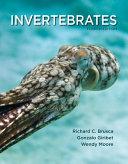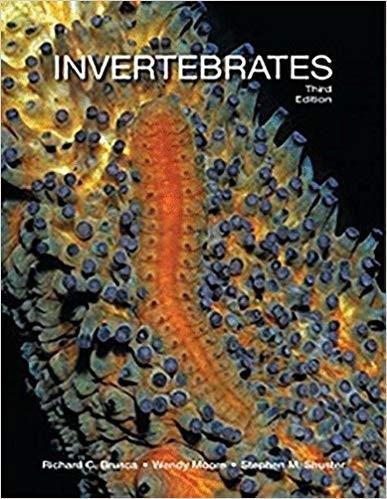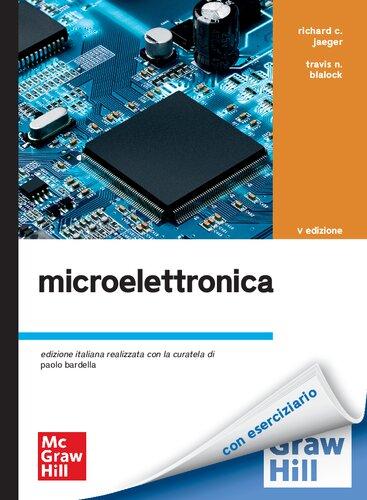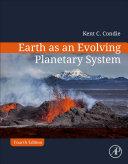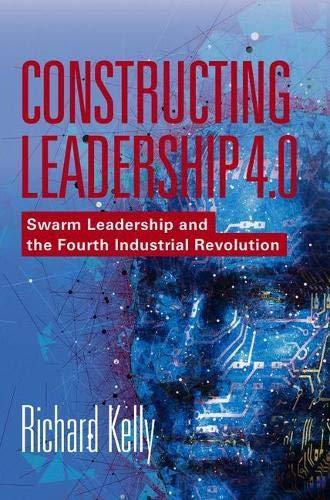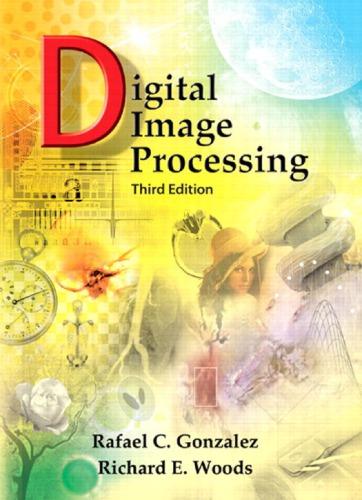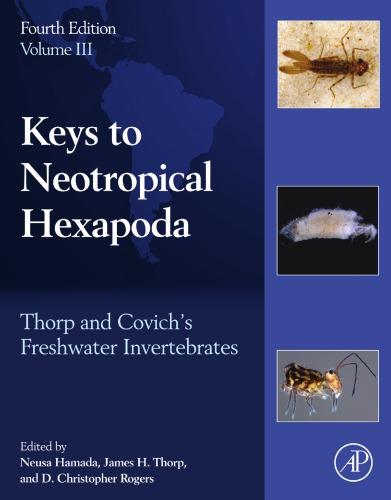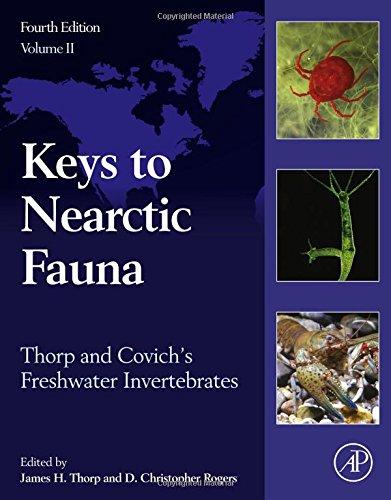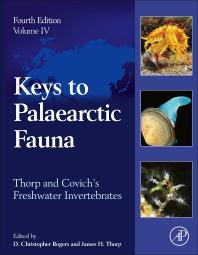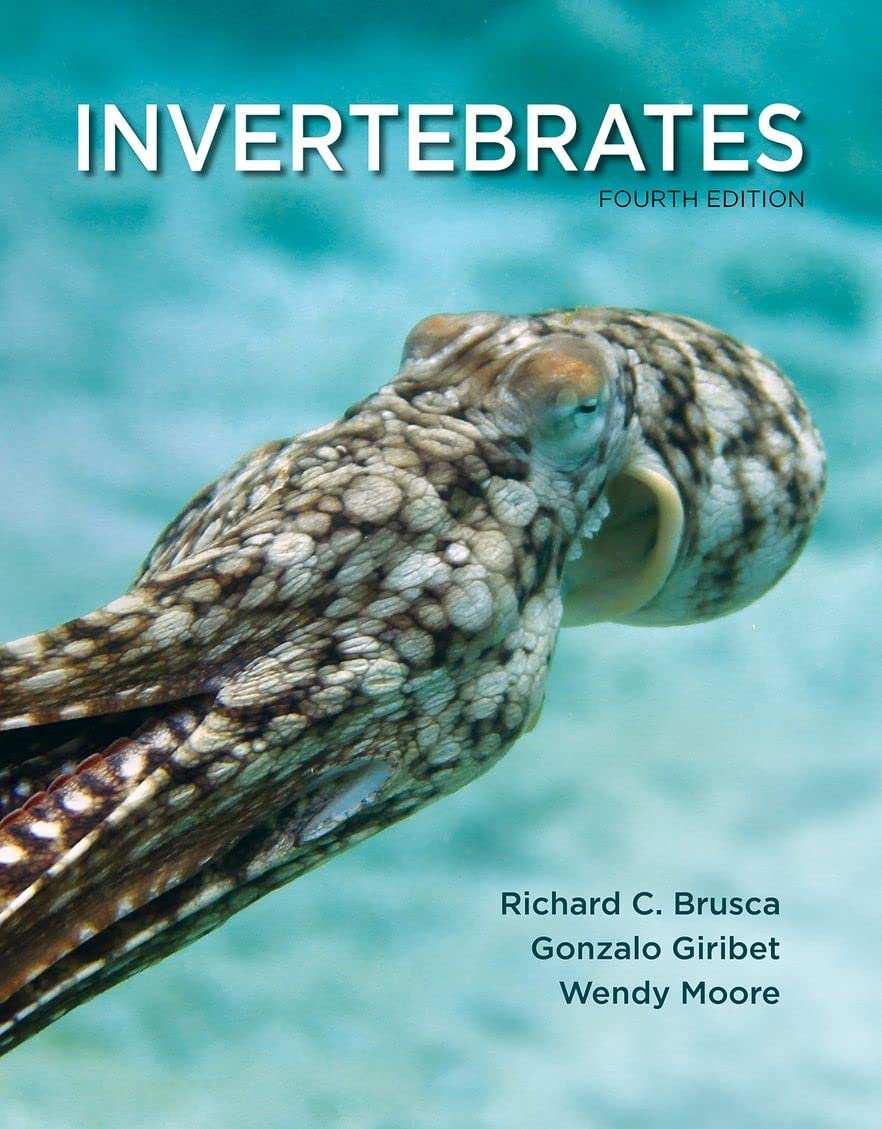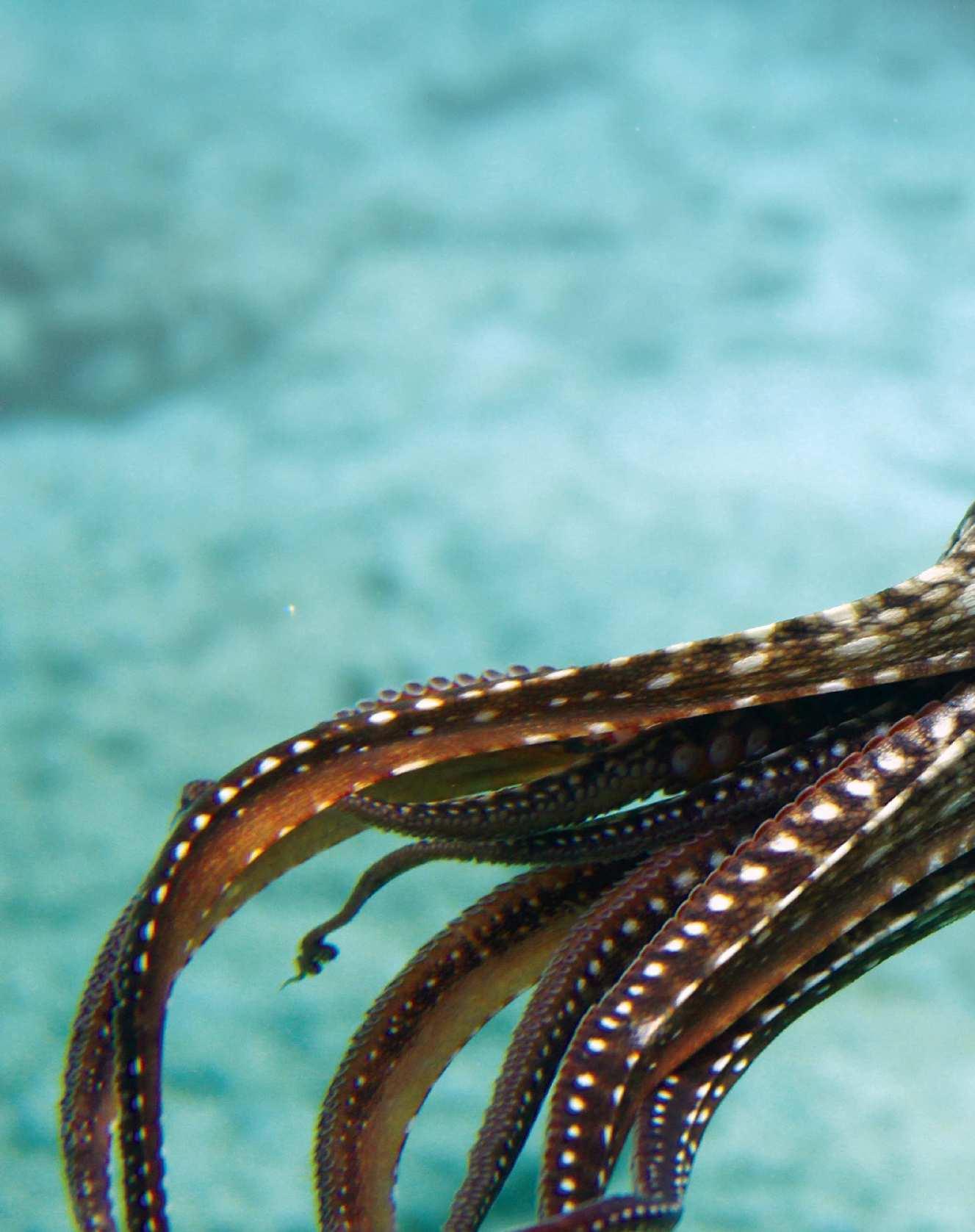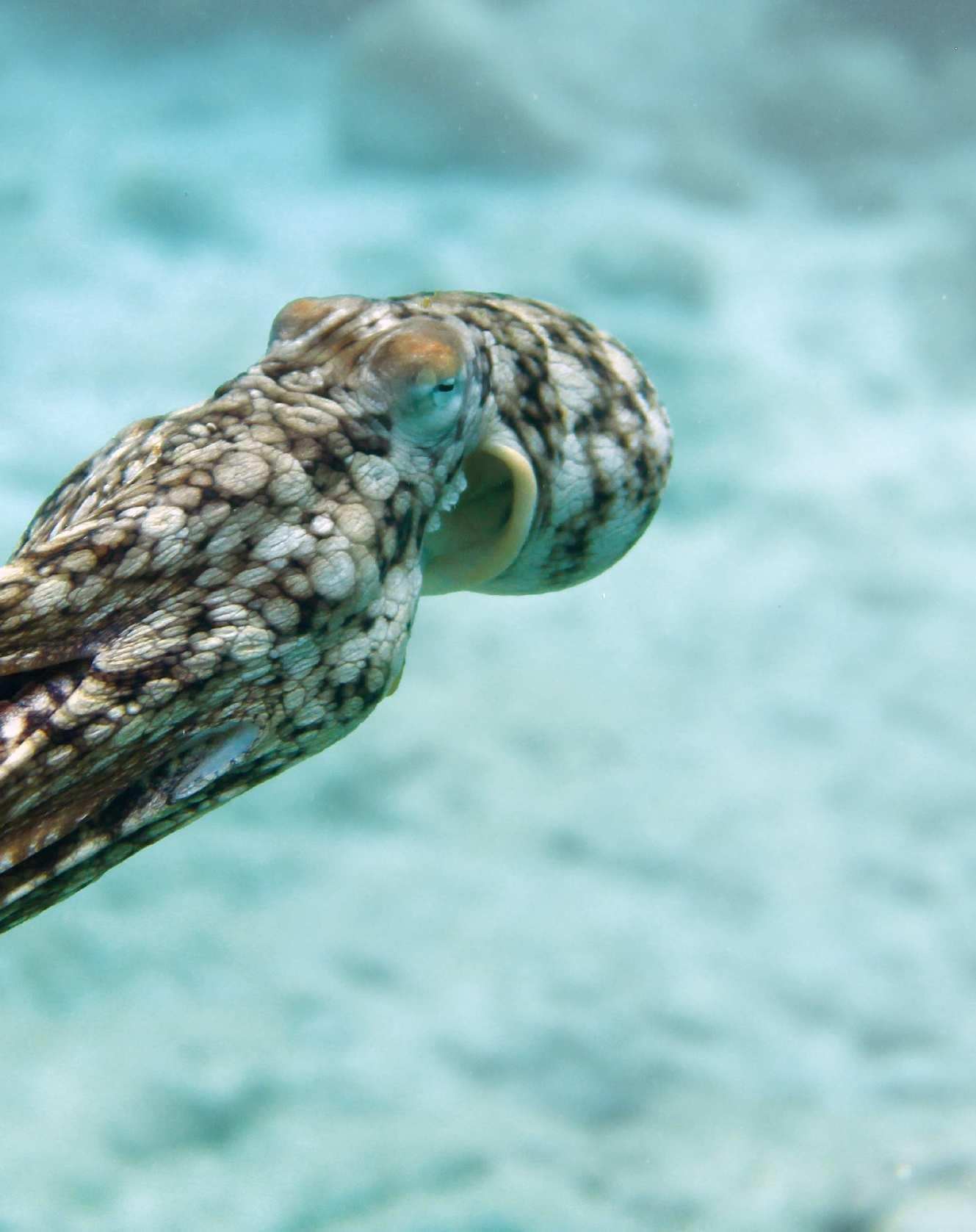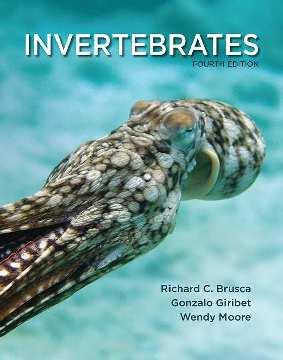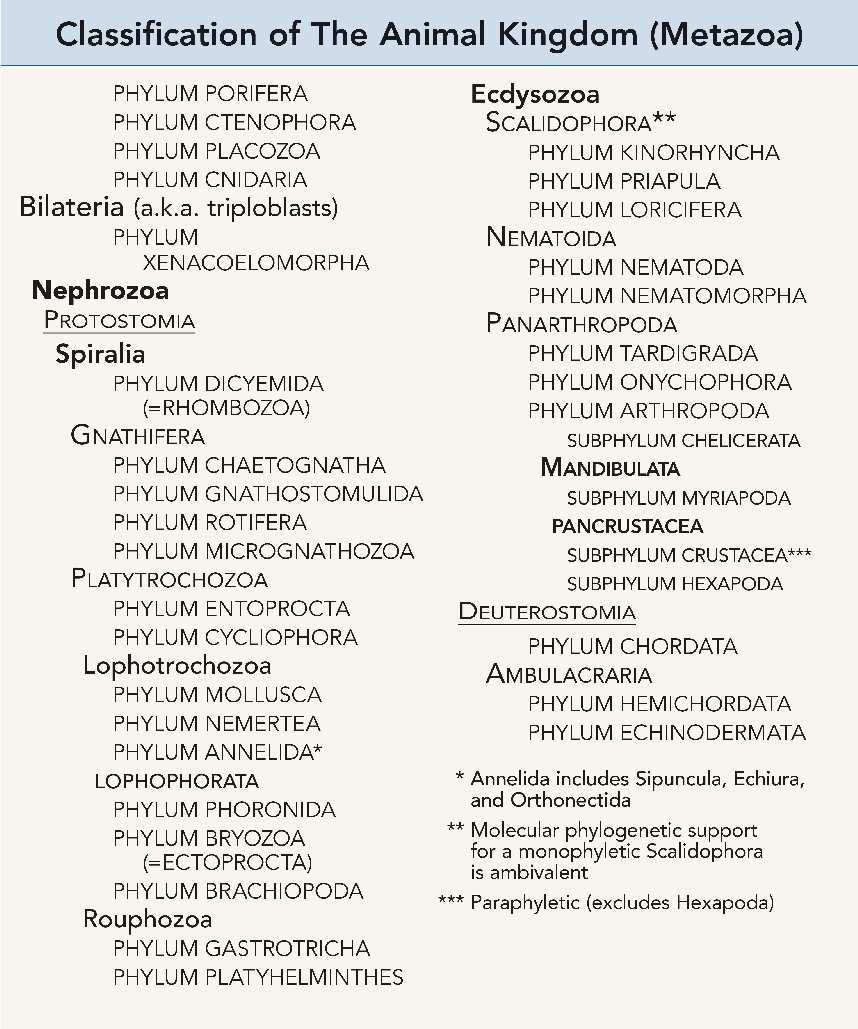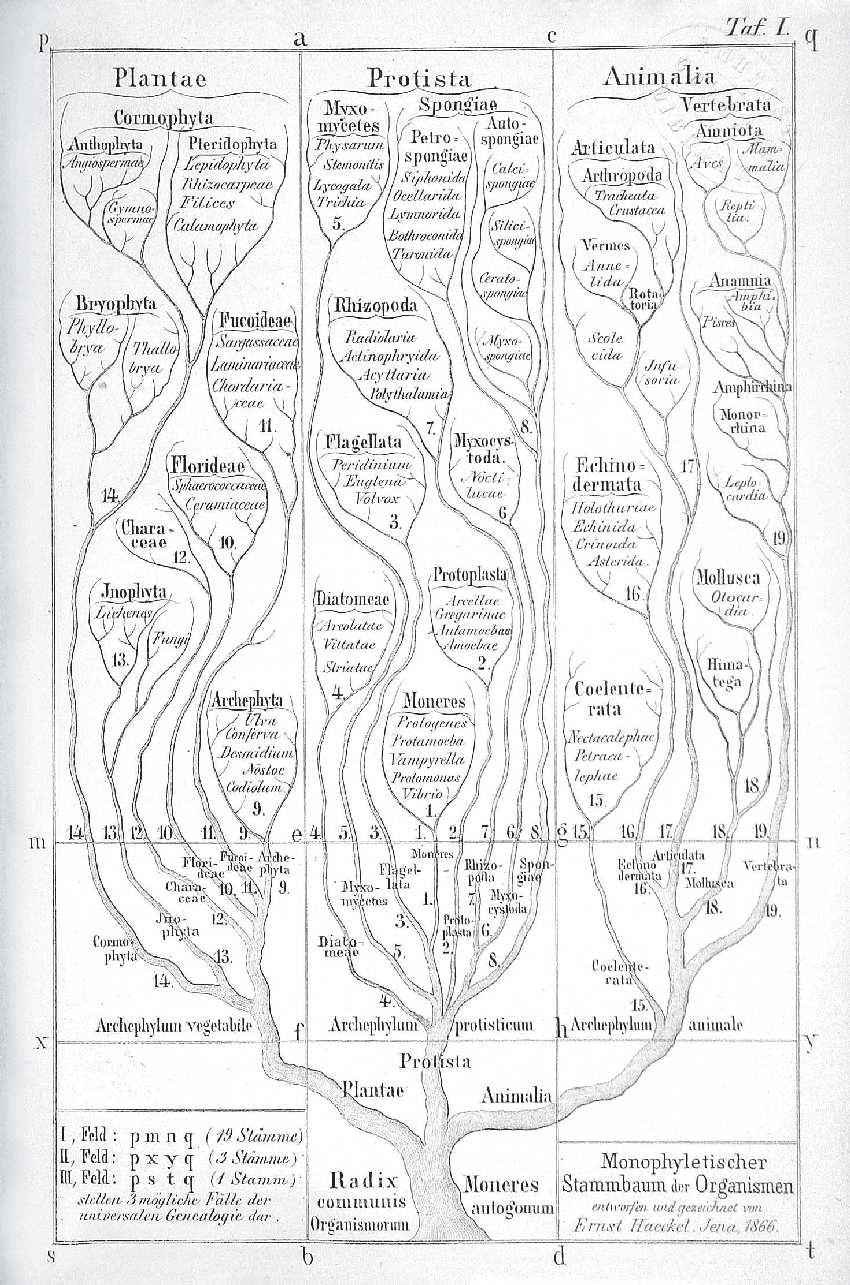Invertebrates: Fourth Edition Richard C. Brusca
Visit to download the full and correct content document: https://ebookmass.com/product/invertebrates-fourth-edition-richard-c-brusca/
More products digital (pdf, epub, mobi) instant download maybe you interests ...
(eTextbook PDF) for Invertebrates 3rd Edition by Richard C. Brusca
https://ebookmass.com/product/etextbook-pdf-forinvertebrates-3rd-edition-by-richard-c-brusca/
Microelettronica
5th Edition Richard C. Jaeger
https://ebookmass.com/product/microelettronica-5th-editionrichard-c-jaeger/
Earth as an Evolving Planetary System (Fourth Edition)
Kent C. Condie
https://ebookmass.com/product/earth-as-an-evolving-planetarysystem-fourth-edition-kent-c-condie/
Constructing Leadership 4.0: Swarm Leadership and the Fourth Industrial Revolution 1st Edition Richard Kelly
https://ebookmass.com/product/constructing-leadership-4-0-swarmleadership-and-the-fourth-industrial-revolution-1st-editionrichard-kelly/
Digital Image Processing 3rd Edition Rafael C. Gonzalez And Richard E. Woods
https://ebookmass.com/product/digital-image-processing-3rdedition-rafael-c-gonzalez-and-richard-e-woods/
Thorp and Covich's Freshwater Invertebrates: Keys to Neotropical Hexapoda 4th Edition Neusa Hamada
https://ebookmass.com/product/thorp-and-covichs-freshwaterinvertebrates-keys-to-neotropical-hexapoda-4th-edition-neusahamada/
Sport
Marketing Fourth Edition
https://ebookmass.com/product/sport-marketing-fourth-edition/
Thorp and Covich's Freshwater Invertebrates: Keys to Nearctic Fauna 4th Edition James H. Thorp
https://ebookmass.com/product/thorp-and-covichs-freshwaterinvertebrates-keys-to-nearctic-fauna-4th-edition-james-h-thorp/
Thorp and Covich's Freshwater Invertebrates: Keys to Palaearctic Fauna 4th Edition James H. Thorp
https://ebookmass.com/product/thorp-and-covichs-freshwaterinvertebrates-keys-to-palaearctic-fauna-4th-edition-james-hthorp/
for more ebook/
Richard C. Brusca, PhD
Executive Director Emeritus, Arizona-Sonora Desert Museum and Research Scientist, Department of Ecology and Evolutionary Biology, University of Arizona
Gonzalo Giribet, PhD
Director, Museum of Comparative Zoology and Alexander Agassiz Professor of Zoology, Harvard University
Wendy Moore, PhD
Associate Professor and Curator, Department of Entomology, University of Arizona with illustrations by Nancy Haver
About the cover
Day Octopus (Octopus cyanea).
Found throughout the tropical Indo-Pacific, this is the most commonly seen octopus in Hawai’i. Hidden in a lair on the reef floor by night, the octopus will reach out with tentacles to gather coral rubble to protect the entrance. When at rest in its lair, it is a uniformly dark reddish-brown but during the day when hunting crabs on the reef bottom, it displays a spectacular array of color patterns and textures to match the varied landscape it crosses. An ink cloud released during escape contains mucus, melanin, dopamine, and tyrosinase, and is thought to confuse a fish predator and to depress its olfactory ability.
Larry Jon Friesen, PhD, completed his graduate research at the University of California, Santa Barbara, in Animal Communication. Dr. Friesen is a Professor of Biological Sciences at Santa Barbara City College, teach ing Natural History, Evolution and Animal Diversity and continuing his life-long passion for nature photography.
Invertebrates, Fourth Edition
Oxford University Press is a department of the University of Oxford. It furthers the University’s objective of excellence in research, scholarship, and education by publishing worldwide. Oxford is a registered trade mark of Oxford University Press in the UK and certain other countries.
Published in the United States of America by Oxford University Press 198 Madison Avenue, New York, NY 10016, United States of America.
© 2023, 2016, 2003, 1990 Oxford University Press Sinauer Associates is an imprint of Oxford University Press.
For titles covered by Section 112 of the US Higher Education Opportunity Act, please visit www.oup.com/us/he for the latest information about pricing and alternate formats.
All rights reserved. No part of this publication may be reproduced, stored in a retrieval system, or transmitted, in any form or by any means, without the prior permission in writing of Oxford University Press, or as expressly permitted by law, by license, or under terms agreed with the appropriate reproduction rights organization. Inquiries concerning reproduction outside the scope of the above should be sent to the Rights Department, Oxford University Press, at the address above.
You must not circulate this work in any other form and you must impose this same condition on any acquirer.
Address editorial correspondence to: Sinauer Associates 23 Plumtree Road Sunderland, MA 01375 U.S.A.
ACCESSIBLE COLOR CONTENT Every opportunity has been taken to ensure that the content herein is fully accessible to those who have difficulty perceiving color. Exceptions are cases where the colors provided are expressly required because of the purpose of the illustration.
Library of Congress Cataloging-in-Publication Data
Names: Brusca, Richard C., author. | Giribet, Gonzalo, author. | Moore, Wendy, author. Title: Invertebrates / Richard C. Brusca, PhD, Executive Director Emeritus, ArizonaSonora Desert Museum, Research Scientist, Department of Ecology and Evolutionary Biology, University of Arizona, Gonzalo Giribet, PhD, Director, Museum of Comparative Zoology and Alexander Agassiz Professor of Zoology, Harvard University, Wendy Moore, PhD, Associate Professor and Curator, Department of Entomology, University of Arizona.
Description: Fourth edition. | New York : Oxford University Press, [2023] | Revised edition of: Invertebrates / Richard C. Brusca, Wendy Moore, Stephen M. Shuster. Third edition. 2016. | Includes bibliographical references and index.
Identifiers: LCCN 2021054094 | ISBN 9780197554418 (hardback) | ISBN 9780197637173 (epub)
Subjects: LCSH: Invertebrates.
Classification: LCC QL362 .B924 2023 | DDC 592--dc23/eng/20211103
LC record available at https://lccn.loc.gov/2021054094
9 8 7 6 5 4 3 2 1
Printed in the United States of America
© Larry Jon Friesen
for more ebook/ testbank/ solution manuals requests: email 960126734@qq.com
We dedicate this book to all our fellow teachers and students of invertebrate zoology around the world.
Brief Contents
CHAPTER 1 Introduction 1
CHAPTER 2 Systematics, Phylogeny, and Classifications 27
CHAPTER 3 Introduction to the Animal Kingdom: Animal Architecture and Body Plans 43
CHAPTER 4 Introduction to the Animal Kingdom: Development, Life Histories, and Origin 91
CHAPTER 5 Phylum Porifera: The Sponges 119
CHAPTER 6 Two Enigmatic Phyla: Placozoa and Ctenophora (The Comb Jellies) 165
CHAPTER 7 Phylum Cnidaria: Anemones, Corals, Jellyfish, and Their Kin 185
CHAPTER 8 A Brief Introduction to the Bilateria and Its Major Clades 245
CHAPTER 9 Phylum Xenacoelomorpha: Basal Bilaterians 249
CHAPTER 10 Protostomia, Spiralia, and the Phylum Dicyemida 273
CHAPTER 11 Gnathifera: The Phyla Gnathostomulida, Rotifera (including Acanthocephala), Micrognathozoa, and Chaetognatha 281
CHAPTER 12 Platytrochozoa and Two Enigmatic Phyla: Entoprocta and Cycliophora 311
CHAPTER 13 Introduction to the Lophotrochozoa, and the Phylum Mollusca 321
CHAPTER 14 Phylum Nemertea: The Ribbon Worms 397
CHAPTER 15 Phylum Annelida: The Segmented (and Some Unsegmented) Worms 415
CHAPTER 16 The Lophophorates: Phyla Phoronida, Bryozoa, and Brachiopoda 487
CHAPTER 17 Rouphozoa: The Phyla Platyhelminthes (Flatworms) and Gastrotricha (Hairy-Bellied Worms) 519
CHAPTER 18 Introduction to Ecdysozoa: Scalidophora (Phyla Kinorhyncha, Priapula, Loricifera) 563
CHAPTER 19 Nematoida: Phyla Nematoda and Nematomorpha 579
CHAPTER 20 Panarthropoda and the Emergence of the Arthropods: Tardigrades, Onychophorans, and the Arthropod Body Plan 607
CHAPTER 21 Phylum Arthropoda—Subphylum Crustacea: Crabs, Shrimps, and Their Kin 659
CHAPTER 22 Phylum Arthropoda—Subphylum Hexapoda: Insects and Their Kin 735
CHAPTER 23 Phylum Arthropoda—Subphylum Myriapoda: Centipedes, Millipedes, and Their Kin 785
CHAPTER 24 Phylum Arthropoda: Subphylum Chelicerata 801
CHAPTER 25 Introduction to Deuterostomia, and the Phylum Hemichordata 857
CHAPTER 26 Phylum Echinodermata : Starfish, Sea Urchins, Sea Cucumbers, and their Kin 873
CHAPTER 27 Phylum Chordata: Cephalochordata and Urochordata 911
CHAPTER 28 Perspectives on Invertebrate Phylogeny 935
Classification of the Animal Kingdom (Metazoa) xx
A Phylogeny of Metazoa xxi
Geologic Time Scale xxii
CHAPTER 1 Introduction 1
Keeping Track of Life 3
Prokaryotes and Eukaryotes 7
Where Did Invertebrates Come From? 9
The Dawn of Life 10
The Ediacaran Period and the Origin of Animals 10
The Paleozoic Era (541–251.9 Ma) 11
The Mesozoic Era (251.9–66 Ma) 15
The Cenozoic Era (66 Ma–present) 16
Where Do Invertebrates Live? 16
Marine Habitats 16
Estuaries and Coastal Wetlands 21
Freshwater Habitats 21
Terrestrial Habitats 22
A Special Type of Environment: Symbiosis 22
Changing Views of Invertebrate Phylogeny 24
Legacy Names 25
Phylogenetics and Classification Schemes 25
A Final Introductory Message to the Reader 25
CHAPTER 2 Systematics, Phylogeny, and Classifications 27
Phylogeny, Monophyly, Paraphyly, and Polyphyly 28
Homology 29
Apomorphy and Plesiomorphy 32
Challenges of Phylogenetic Inference 32
Constructing Phylogenies 33
Biological Classification 35
Nomenclature 38
CHAPTER 3 Introduction to the Animal Kingdom: Animal Architecture and Body Plans 43
Body Symmetry 44
Cellularity, Body Size, Germ Layers, and Body Cavities 47
Locomotion and Support 49
Reynolds Number 49
Ameboid Locomotion 50
Cilia and Flagella 50
Muscles and Skeletons 52
Feeding and Digestion 56
Intracellular and Extracellular Digestion 56
Feeding Strategies 57
Excretion and Osmoregulation 65
Nitrogenous Wastes and Water Conservation 66
Osmoregulation and Habitat 66
Excretory and Osmoregulatory Structures 67
Circulation and Gas Exchange 69
Internal Transport 69
Circulatory Systems 70
Hearts and Other Pumping Mechanisms 71
Gas Exchange and Transport 71
Nervous Systems and Sense Organs 75
Sense Organs 76
Independent Effectors 81
Bioluminescence 81
Nervous Systems and Body Plans 81
Hormones and Pheromones 84
Reproduction 84
Asexual Reproduction 84
Sexual Reproduction 86
Parthenogenesis 88
CHAPTER 4
Introduction to the Animal Kingdom: Development, Life Histories, and Origin 91
Evolutionary Developmental Biology: Evo-Devo 92
Developmental Tool Kits 92
The Relationship Between Genotype and Phenotype 93
The Evolution of Novel Gene Function 93
Gene Regulatory Networks 93
Eggs and Embryos 95
Eggs 95
Cleavage 95
Orientation of Cleavage Planes 96
Radial and Spiral Cleavage 96
Cell Fates 99
Blastula Types 101
Gastrulation and Germ Layer Formation 101
Mesoderm and Body Cavities 103
Life Cycles: Sequences and Strategies 105
Classification of Life Cycles 105
Indirect Development 107
Settling and Metamorphosis 107
Direct Development 108
Mixed Development 108
Adaptations to Land and Fresh Water 109
Parasite Life Cycles 109
The Relationships Between Ontogeny and Phylogeny 110
The Concept of Recapitulation 110
Heterochrony and Paedomorphosis 111
The Origin of the Metazoa 112
Origin of the Metazoan Condition 112
Historical Perspectives on Metazoan Origins 112
The Origin of Multicellularity 114
The Origin of the Bilateral Condition and the Coelom 115
The Trochaea Theory 116
Closing Thoughts 117
CHAPTER 5 Phylum Porifera: The Sponges 119
Phylum Porifera: The Sponges 120
Taxonomic History and Classification 123
The Poriferan Body Plan 126
Body Structure and the Aquiferous System 127
More on Sponge Cell Types 132
Support 136
Nutrition, Excretion, and Gas Exchange 138
Activity and Sensitivity 143
Reproduction and Development 143
Some Additional Aspects of Sponge Biology 154
Distribution and Ecology 154
Biochemical Agents 154
Growth Rates 155
Symbioses 156
Poriferan Phylogeny 159
The Origin of Sponges 159
Evolution within the Porifera 160
CHAPTER 6 Two Enigmatic Phyla: Placozoa and Ctenophora (The Comb Jellies) 165
Phylum Placozoa 166
Phylum Ctenophora 167
Taxonomic History and Classification 169
The Ctenophoran Body Plan 172
Support and Locomotion 175
Feeding and Digestion 176
Circulation, Excretion, Gas Exchange, and Osmoregulation 179
Nervous System and Sense Organs 179
Reproduction and Development 181
Ctenophoran Phylogeny 183
CHAPTER 7 Phylum Cnidaria: Anemones, Corals, Jellyfish, and Their Kin 185
Taxonomic History and Classification 190
The Cnidarian Body Plan 196
The Body Wall 197
Support 209
Movement 212
Cnidae 215
Feeding and Digestion 218
Defense, Interactions, and Symbiosis 220
Circulation, Gas Exchange, Excretion, and Osmoregulation 227
Nervous System and Sense Organs 227
Reproduction and Development 231
Cnidarian Evolutionary History 240
Earliest Cnidaria 240
Cnidarian Phylogeny 241
CHAPTER 8 A Brief Introduction to the Bilateria and Its Major Clades 245
The Bilateria 245
Deuterostomes and Protostomes 246
CHAPTER 9 Phylum Xenacoelomorpha: Basal Bilaterians 249
The Basal Bilaterian 249
Phylum Xenacoelomorpha 250
Subphylum Acoelomorpha 252
Class Acoela 252
The Acoel Body Plan 255
Body Wall and External Appearance 255
Body Musculature, Support, and Movement 256
Nutrition, Excretion, and Gas Exchange 257
Nervous Systems and Sense Organs 258
Reproduction and Development 259
Class Nemertodermatida 261
The Nemertodermatid Body Plan 263
Body Structure 263
Cell and Tissue Organization 263
Support and Movement 263
Nutrition, Excretion, Gas Exchange 264
Nervous System 265
Reproduction and Development 265
Subphylum Xenoturbellida 267
The Xenoturbellid Body Plan 268
General Body Structure 268
Support and Movement 269
Nutrition, Excretion, and Gas Exchange 270
Nervous System and Sense Organs 270
Reproduction and Development 270
CHAPTER 10 Protostomia, Spiralia, and the Phylum Dicyemida 273
Protostomes and Deuterostomes 273
Spiralia and Ecdysozoa 274
The Phylum Dicyemida (= Rhombozoa) 275
Anatomy and Biology of Dicyemidans 275 Life Cycles 277
CHAPTER 11 Gnathifera: The Phyla Gnathostomulida, Rotifera (including Acanthocephala), Micrognathozoa, and Chaetognatha 281
Phylum Gnathostomulida: The Gnathostomulids 283
The Gnathostomulid Body Plan 284
Body Wall, Support, and Locomotion 284
Nutrition, Circulation, Excretion, and Gas Exchange 284
Nervous System 284
Reproduction and Development 284
Phylum Rotifera: The Free-Living Rotifers 284
The Rotifer Body Plan 286
Body Wall, General External Anatomy, and the Corona 286
Body Cavity, Support, and Locomotion 287
Feeding and Digestion 288
Circulation, Gas Exchange, Excretion, and Osmoregulation 289
Nervous System and Sense Organs 290
Reproduction and Development 290
Phylum Rotifera, Subclass Acanthocephala: The Acanthocephalans 292
The Acanthocephalan Body Plan 293
Body Wall, Support, Attachment, and Nutrition 293
Circulation, Gas Exchange, and Excretion 294
Nervous System 294
Reproduction and Development 294
Phylum Micrognathozoa: The Micrognathozoans 295
The Micrognathozoan Body Plan 296
Epidermis, Ciliation, and Body Wall Musculature 296
Locomotion 298
Pharyngeal Apparatus, Feeding, and Digestion 298
Circulation, Gas Exchange, and Excretion 298
Nervous System and Sense Organs 301
Reproduction and Development 301
Phylum Chaetognatha 301
The Chaetognath Body Plan 304
Body Wall, Support, and Movement 304
Feeding and Digestion 306
Circulation, Gas Exchange, and Excretion 306
Nervous System and Sense Organs 306
Reproduction and Development 307
CHAPTER 12 Platytrochozoa and Two Enigmatic Phyla: Entoprocta and Cycliophora 311
Phylum Entoprocta: The Entoprocts 312
The Entoproct Body Plan 314
Body Wall, Support, and Movement 314
Feeding and Digestion 314
Circulation, Gas Exchange, and Excretion 314
Nervous System 315
Reproduction and Development 316
Phylum Cycliophora: The Cycliophorans 317
CHAPTER 13 Introduction to the Lophotrochozoa, and the Phylum Mollusca 321
Phylum Mollusca 322
Taxonomic History and Classification 322
The Molluscan Body Plan 344
The Body Wall 346
The Mantle and Mantle Cavity 346
The Molluscan Shell 347
Torsion, or “How the Gastropod Got its Twist” 353
Locomotion 356
Feeding 361
Digestion 370
Circulation and Gas Exchange 373
Excretion and Osmoregulation 377
Nervous System 378
Sense Organs 380
Cephalopod Coloration and Ink 384
Reproduction 385
Development 389
Molluscan Evolution and Phylogeny 392
CHAPTER 14 Phylum Nemertea: The Ribbon Worms 397
Taxonomic History and Classification 399
Classification 399
The Nemertean Body Plan 400
Body Wall 401
Support and Locomotion 402
Feeding and Digestion 402
Circulation and Gas Exchange 406
Excretion and Osmoregulation 406
Nervous System and Sense Organs 408
Reproduction and Development 409
Nemertean Phylogeny 411
CHAPTER 15 Phylum Annelida: The Segmented (and Some Unsegmented) Worms
Taxonomic History and Classification 416
The Annelid Body Plan 426
Body Forms 426
Body Wall and Coelomic Arrangement 428
Support and Locomotion 429
Feeding and Digestion 432
Circulation and Gas Exchange 441
Excretion and Osmoregulation 444
Nervous System and Sense Organs 446
Reproduction and Development 450
Sipuncula: The Peanut Worms 457
Classification of Sipuncula 459
The Sipunculan Body Plan 460
Body Wall, Coelom, Circulation, and Gas Exchange 460
Support and Locomotion 461
Feeding and Digestion 462
Excretion and Osmoregulation 462
Nervous System and Sense Organs 463
Reproduction and Development 463
415
Thalassematidae: The Spoon Worms 465
Body Wall and Coelom 465
Support and Locomotion 465
Feeding and Digestion 465
Circulation and Gas Exchange 469
Excretion and Osmoregulation 469
Nervous System and Sense Organs 469
Reproduction and Development 469
Siboglinidae: Vent Worms and Their Kin 470
Siboglinid Taxonomic History 473
The Siboglinid Body Plan 473
The Tube, Body Wall, and Body Cavity 473
Nutrition 474
Circulation, Gas Exchange, Excretion, and Osmoregulation 474
Nervous System and Sense Organs 474
Reproduction and Development 474
Hirudinea: Leeches and Their Relatives 476
The Hirudinean Body Plan 477
Body Wall and Coelom 477
Support and Locomotion 477
Feeding and Digestion 478
Circulation and Gas Exchange 479
Excretion and Osmoregulation 480
Nervous System and Sense Organs 480
Reproduction and Development 481
Orthonectida: Extremely Simplified Annelids 482
Annelid Phylogeny 483
CHAPTER 16 The Lophophorates: Phyla Phoronida, Bryozoa, and Brachiopoda 487
Taxonomic History of the Lophophorates 488
The Lophophorate Body Plan 489
Phylum Phoronida: The Phoronids 490
The Phoronid Body Plan 490
Body Wall, Body Cavity, and Support 490
The Lophophore, Feeding, and Digestion 494
Circulation, Gas Exchange, and Excretion 494
Nervous System 495
Reproduction and Development 495
Phylum Bryozoa: The Moss Animals 496
The Bryozoan Body Plan 499
The Body Wall, Coelom, Muscles, and Movement 501
Zooid Interconnections 502
The Tentacle Crown, Feeding, and Digestion 503
Circulation, Gas Exchange, and Excretion 504
Nervous System and Sense Organs 505
Reproduction and Development 506
Phylum Brachiopoda: The Lamp Shells 509
The Brachiopod Body Plan 512
The Body Wall, Coelom, and Support 512
The Lophophore, Feeding, and Digestion 513
Circulation, Gas Exchange, and Excretion 514
Nervous System and Sense Organs 515
Reproduction and Development 515
CHAPTER 17 Rouphozoa: The Phyla Platyhelminthes (Flatworms) and Gastrotricha (Hairy-Bellied Worms) 519
Introduction to Rouphozoa 519
The Phylum Platyhelminthes (Flatworms) 520
Taxonomic History and Classification 522
The Platyhelminth Body Plan 527
Body Wall 529
Support, Locomotion, and Attachment 532
Feeding and Digestion 533
Circulation and Gas Exchange 537
Excretion and Osmoregulation 538
Nervous System and Sense Organs 539
Reproduction and Development 541
Platyhelminth Phylogeny 554
Phylum Gastrotricha: The Gastrotrichs, or HairyBellied Worms 556
The Gastrotrich Body Plan 558
Body Wall 558
Support and Locomotion 558
Feeding and Digestion 558
Circulation, Gas Exchange, Excretion, and Osmoregulation 558
Nervous System and Sense Organs 558
Reproduction and Development 560
CHAPTER 18 Introduction to Ecdysozoa: Scalidophora (Phyla Kinorhyncha, Priapula, Loricifera) 563
Introduction to Ecdysozoa 563
The Scalidophora 564
Phylum Kinorhyncha: The Kinorhynchs, or Mud Dragons 564
The Kinorhynch Body Plan 567
Body Wall 567
Support and Locomotion 567
Feeding and Digestion 567
Circulation, Gas Exchange, Excretion, and Osmoregulation 567
Nervous System and Sense Organs 568
Reproduction and Development 568
Phylum Priapula: The Priapulans, or Penis Worms 568
Priapulan Body Plan 570
Body Wall, Support, and Locomotion 570
Feeding and Digestion 571
Circulation, Gas Exchange, Excretion, and Osmoregulation 571
Nervous System and Sense Organs 572
Reproduction and Development 572
Phylum Loricifera: The Loriciferans 572
CHAPTER 19 Nematoida: Phyla Nematoda and Nematomorpha 579
Phylum Nematoda: Roundworms 581
Classification of Phylum Nematoda 582
The Nematode Body Plan 586
Body Wall, Support, and Locomotion 586
Feeding and Digestion 588
Circulation, Gas Exchange, Excretion, and Osmoregulation 590
Nervous System and Sense Organs 592
Reproduction, Development, and Life Cycles 594
Life Cycles of Some Parasitic Nematodes 597
CHAPTER
20 Panarthropoda and
Phylum Nematomorpha: Horsehair Worms and Their Kin 600
The Nematomorph Body Plan 601
Body Wall, Support, and Locomotion 601
Feeding and Digestion 603
Circulation, Gas Exchange, Excretion, and Osmoregulation 603
Nervous System and Sense Organs 604
Reproduction and Development 604
the Emergence of the Arthropods: Tardigrades, Onychophorans, and the Arthropod Body Plan 607
Phylum Tardigrada 610
The Tardigrade Body Plan 613
Locomotion 615
Feeding, Digestion, and Excretion 616
Circulation and Gas Exchange 616
Nervous System and Sense Organs 616
Reproduction and Development 617
Phylum Onychophora 619
The Onychophoran Body Plan 622
Locomotion 623
Feeding and Digestion 624
Circulation and Gas Exchange 624
Excretion and Osmoregulation 625
Nervous System, Sense Organs, and Behavior 625
Reproduction and Development 626
Systematics and Biogeography 628
An Introduction to the Phylum Arthropoda 628
Taxonomic History and Classification 629
The Arthropod Body Plan and Arthropodization 630
The Body Wall 632
Arthropod Appendages 634
Support and Locomotion 636
Growth 639
The Digestive System 642
Circulation and Gas Exchange 644
Excretion and Osmoregulation 646
Nervous System and Sense Organs 647
Reproduction and Development 651
The Evolution of Arthropods 652
The Origin of Arthropods 652
Evolution within the Arthropoda 652
CHAPTER 21 Phylum Arthropoda—Subphylum Crustacea: Crabs, Shrimps, and Their Kin 659
Classification of the Crustacea 663
Synopses of Crustacean Taxa 666
The Crustacean Body Plan 699
Locomotion 703
Feeding 708
Digestive System 714
Circulation and Gas Exchange 717
Excretion and Osmoregulation 719
Nervous System and Sense Organs 720
Reproduction and Development 724
Crustacean Phylogeny 730
CHAPTER 22 Phylum Arthropoda—Subphylum Hexapoda: Insects and Their Kin 735
Classification of the Subphylum Hexapoda 738
Synopses of Hexapod Groups 739
The Hexapod Body Plan 751
General Morphology 751
Locomotion 758
The Origin of Insect Flight 761
Feeding and Digestion 762
Circulation and Gas Exchange 767
Excretion and Osmoregulation 770
Nervous System and Sense Organs 771
Reproduction and Development 775
Hexapod Evolution 780
CHAPTER 23 Phylum Arthropoda—Subphylum Myriapoda: Centipedes, Millipedes, and Their Kin 785
Myriapod Classification 787
The Myriapod Body Plan 789
Head and Mouth Appendages 791
Locomotion 791
Feeding and Digestion 791
CHAPTER
Circulation and Gas Exchange 793
Excretion and Osmoregulation 794
Nervous System and Sense Organs 794
Reproduction and Development 795
Embryonic Development 798
Myriapod Phylogeny 798
24 Phylum Arthropoda: Subphylum Chelicerata 801
Synopses of Living Chelicerate Groups 807
The Euchelicerate Body Plan 818
Spinnerets, Spider Silk, and Spider Webs 819
Locomotion 823
Feeding and Digestion 826
Circulation and Gas Exchange 831
Excretion and Osmoregulation 834
Nervous System and Sense Organs 834
Reproduction and Development 837
The Class Pycnogonida 846
The Pycnogonid Body Plan 849
External Anatomy 849
Locomotion 850
Feeding and Digestion 850
Circulation, Gas Exchange, and Excretion 852
Nervous System and Sense Organs 852
Reproduction and Development 852
Chelicerate Phylogeny 854
CHAPTER 25 Introduction to Deuterostomia, and the Phylum Hemichordata 857
Introduction to the Deuterostomia 857
Phylum Hemichordata: Acorn Worms and Pterobranchs 859
The Hemichordate Body Plan 862
Class Enteropneusta (Acorn Worms) 863
External Anatomy 863
Support Structures 863
Coelomic Cavities 863
Musculature and Locomotion 865
Feeding and Digestion 865
Circulatory System 866
Excretory System 866
Gas Exchange 866
Nervous System 866
Reproduction and Development 866
Class Pterobranchia (Pterobranchs) 868
Body Wall and Cavities 869
Support, Muscles, and Movement 869
Gut and Feeding 869
Circulation and Gas Exchange 869
Nervous System 870
Reproduction and Development 870
Hemichordate Fossil Record and Phylogeny 870
CHAPTER 26 Phylum Echinodermata: Starfish, Sea Urchins, Sea Cucumbers, and their Kin 873
Taxonomic History and Classification 877
The Echinoderm Body Plan 881
Developmental Roots of the Echinoderm Body Plan 881
Body Wall and Coelom 883
Mutable Collagenous Tissue 885
Water Vascular System 885
Support and Locomotion 887
Feeding and Digestion 889
Circulation and Gas Exchange 896
Excretion and Osmoregulation 899
Nervous System and Sense Organs 900
Reproduction and Development 900
Echinoderm Phylogeny 905
First Echinoderms 905
Modern Echinoderms 908
CHAPTER 27 Phylum Chordata: Cephalochordata and Urochordata 911
Phylum Chordata, Subphylum Cephalochordata: The Lancelets 913
The Cephalochordate Body Plan 913
Body Wall, Support, and Locomotion 913
Feeding and Digestion 915
Circulation, Gas Exchange, and Excretion 915
Nervous System and Sense Organs 916
Reproduction and Development 916
Phylum Chordata, Subphylum Urochordata: The Tunicates 917
The Tunicate Body Plan 920
Body Wall, Support, and Locomotion 925
Feeding and Digestion 925
Circulation, Gas Exchange, and Excretion 927
Nervous System and Sense Organs 927
Reproduction and Development 927
Chordate Phylogeny 931
CHAPTER 28 Perspectives on Invertebrate Phylogeny 935
Illustration Credits IC-1
Selected References SR-1
Index I-1
Digital Resources for Invertebrates, Fourth Edition
To learn more about any of these resources, or to get access, please contact your local OUP representative.
E-Book
(ISBN 9780197637173)
Invertebrates, Fourth Edition is available for purchase as an e-book via RedShelf, VitalSource, and other leading higher education e-book vendors. The e-book can be purchased as either a 180-day rental or a permanent (non-expiring) subscription. All major mobile devices are supported.
For the Instructor
(Available at oup.com/he/brusca4e)
Instructors using Invertebrates , Fourth Edition have access to an extensive collection of visual resources to aid in course planning, lecture development, and student assessment.
● PowerPoint Presentations: All of the textbook’s figures, photos, and tables are provided for each chapter, with figure numbers and titles on each slide, complete captions in the Notes field, and alt text embedded for accessibility. All of the artwork has been reformatted and optimized for exceptional image quality when projected in class.
Deuterostomia
Bilateria
Nephrozoa
Ecdysozoa
Protostomia
Ambulacraria
Chordata
Scalidophora
Nematoida
Panarthropoda
Spiralia
Arthropoda Mandibulata
Gnathifera Rouphozoa
Platytrochozoa
Lophotrochozoa
Lophophorata
Porifera
Ctenophora
Placozoa
Cnidaria
Xenacoelomorpha
Hemichordata
Echinodermata
Cephalochordata
Urochordata
Vertebrata
Kinorhyncha
Priapula
Loricifera
Nematoda
Nematomorpha
Tardigrada
Onychophora
Chelicerata
Crustacea + Hexapoda
Myriapoda
Chaetognatha
Gnathostomulida
Rotifera
Micrognathozoa
Dicyemida
Gastrotricha
Platyhelminthes
Entoprocta
Cycliophora
Mollusca
Nemertea
Annelida
Phoronida
Bryozoa
Brachiopoda
A phylogeny of Metazoa. This tree reflects a consensus view based primarily on recent molecular phylogenetic analyses. The 31 animal phyla are in boldface, whereas subphyla and other clades are in lightface. Spiralian lineages are in red, ecdysozoan lineages are in green, deuterostome lineages are in tan. Uncertainty still exists in several regions, and these are depicted as polytomies (“starbursts”). Thus, for example, the branching sequence for Placozoa, Cnidaria, and Bilateria is not yet resolved, so it is shown as an unresolved trichotomy. Similarly, two large polytomies exist among the Platytrochozoa, and the relationships of the three ecdysozoan clades are still unresolved, as are those of the three scalidophoran phyla. Due to uncertainty, Dicyemida is depicted in an unresolved trichotomy with Gnathifera and Platytrochozoa. See Chapter 28 for additional details.
Brusca 4e
Sinauer Associates/OUP
Morales Studio
Cenozoic
Geologic Time Scale
Quaternar y Neogene Paleogene
Holocene
Pleistocene
Pliocene Miocene
Oligocene
Eocene
Paleocene
Mesozoic
Paleozoic
Cretaceous Jurassic Triassic Permian
Carboniferous Devonian
Silurian Ordovician
Cambrian Ediacaran
Precambrian
ybp = years before present; mya = million years ago; bya = billion years ago Based on www.stratigraphy.org
Brusca 4e BB4e_FM.05.ai
my a
my a
my a
my a
my a
my a
my a
my a
Pennsylvanian Mississippian 11,700 ybp 2 58 my a
my a
my a
my a
my a
my a 4.6 by a

The incredible diversity of extant (= living) invertebrates on Earth is the outcome of more than half a billion years of evolution. Indirect evidence of the first life on Earth, prokaryotic organisms, has been found in some of the oldest sedimentary rocks on the planet, suggesting that life first appeared in Earth’s seas almost as soon as the planet cooled enough for life to exist. The Earth is 4.6 billion years old, and the oldest rocks found so far are about 4.3 billion years old. Although the precise date of the first appearance of life on Earth remains debatable, there are tantalizing 3.6- to 3.8 -billion-year-old trace fossils from Australia that resemble prokaryotic cells—although these have been challenged, and opinion is now split on whether they are traces of early bacteria or simply mineral deposits. However, good evidence of prokaryotic life has been found in pillow lava that formed on the seabed 3.5 billion years ago, now exposed in South Africa. And 3.4-billion-year-old fossil cells (probably sulfur-oxidizing bacteria) have been found among cemented sand grains on an ancient beach in Australia.1
The next big step in biological evolution came about when prokaryotic cells began taking in guests. Around 2 to 2.5 billion years ago, one of these primitive prokaryotic cells took in a free-living bacterium that established permanent residency—giving rise to the cellular organelles we call mitochondria. And that was the origin of the eukaryotic cell. Mitochondria, you will recall from your introductory biology course, generate energy for their host cells by oxidizing sugars, and in this case they also equipped early life to survive in Earth’s gradually increasing oxygen levels. Evidence suggests that mitochondria evolved just once, from a symbiotic α-proteobacterium, and then subsequently diversified broadly. Modern free-living relatives of this bacterium harbor about 2,000 genes across several million base pairs, but their mitochondrial descendants have far fewer, sometimes as few as three genes. And human mitochondrial DNA harbors only about 16,000 base pairs. On the other hand, some plants have greatly
1 There are three popular theories on how life first evolved on Earth. The classic “primeval soup” theory, dating from Stanley Miller’s work in the 1950s, proposes that self-replicating organic molecules first appeared in Earth’s early atmosphere and were deposited by rainfall into the ocean, where they reacted further to make nucleic acids, proteins, and other molecules of life. More recently, the idea of the first synthesis of biological molecules by chemical and thermal activity at deep-sea hydrothermal vents has been suggested. Hydrothermal vents also spew out compounds that could have been incorporated into the first life forms. The third proposal is that organic molecules, or even prokaryotic life itself, first arrived on Earth from another planet (recently Mars has been at the forefront) or from deep space, on comets or meteorites. Meteorites that fall to Earth contain amino acids and organic carbon molecules such as formaldehyde. Clearly, raw materials were not the issue—the trick was assembling the organic compounds to create a living, reproducing system.
© Larry Jon Friesen
expanded their mitochondrial genome, the largest so far discovered in the genus Silene, with around 11 million base pairs. Another prokaryotic intracellular guest, a cyanobacterium, became the ancestor of chloroplasts through the same symbiogenic process; chloroplasts, of course, are the photosynthesizing organelles that made plants and algae possible. In some plant and algal lines, the original chloroplast was lost, and a new one was picked up when a host cell took in an alga and co-opted its chloroplast in another kind of symbiogenic event.
Controversial hydrocarbon biomarkers suggest that the first eukaryotic cells might have appeared as early as 2.7 billion years ago, late in the Archean, although the earliest fossils that have been proposed to be eukaryotes—based on cell surface features and their large size—are 1.6 to 1.8 billion years old (Paleoproterozoic). Multicelled algae (protists) date as far back as 1.2 billion years (in the Mesoproterozoic Era). Eukaryote-like microfossils have been described from 1-billion-year-old freshwater deposits, suggesting that the eukaryotes might have left the sea and invaded the terrestrial realm long ago. Even though the eukaryotic condition appeared early in Earth’s history, it took a few hundred million more years for multicellular organisms to first evolve.
Molecular clock estimates put the origin of Metazoa at 875 to 650 million years ago. The oldest generally accepted metazoan fossils are from the Ediacaran Period (635–541 Ma), found in the Fermeuse Formation of Newfoundland (~560 Ma) and the Doushantuo Formation of southern China (600–580 Ma). A 560-millionyear-old likely cnidarian (named Haootia quadriformis) has been described from Newfoundland, with quadraradial symmetry and clearly preserved bundled muscular fibers. Haootia appears to be a polyp nearly 6 cm long, or perhaps an attached medusa—it resembles modern species of Staurozoa. Cnidarians and other apparent diploblastic animals have been reported from the Doushantuo deposits, although these have been met with skepticism in some quarters. However, in 2015, a seemingly reliable 600-million-year-old fossil sponge (Eocyathispongia qiania) was described from the Doushantuo Formation. In 2009, Jun-Yuan Chen and colleagues reported on embryos of reputed bilaterians (triploblasts) in the Doushantuo deposits— 32-cellstage embryos with micromeres and macromeres, apparent anterior–posterior and dorsoventral patterning, and ectoderm-like cells around part of their periphery. This finding was challenged, and the fossils were variously declared prokaryotes or protists by other workers. However, further discoveries of additional embryos seemed to support the view that these were bilaterian embryos and, in some cases, perhaps diapause embryos (“resting eggs”) of bilaterians. Good trace fossils (tracks) of a minute wormlike bilaterian animal, possibly with legs, have also been described from 585-million - year-old rocks in Uruguay. These
fossils put the appearance of “higher metazoans” (i.e., bilaterians) millions of years before the beginning of the Cambrian period.
There is no argument that Metazoa are monophyletic (i.e., a clade), and the animal kingdom is defined by numerous apomorphies, including: gastrulation and embryonic germ layer formation; unique modes of oogenesis and spermatogenesis; a unique sperm structure; mitochondrial gene reduction; epidermal epithelia with septate junctions, tight junctions, or zonula adherens; striate myofibrils; actin-myosin contractile elements; type IV collagen; and the presence of a basal lamina/basement membrane beneath epidermal layers (of course, some of these features have been secondarily lost in some groups). In addition, there is a series of molecular apomorphies unique to metazoans, including signaling, adhesion, and transcriptional regulation factors (e.g., Wnt, Frizzled, Hedgehog , EGFR , classical cadherin, Hox, and others). Evidence is strong that Metazoa arose out of the protist group Choanoflagellata, or a common ancestor, and the two comprise sister groups in almost all recent analyses. They are, in turn, part of a larger clade known as Opisthokonta that also includes the Fungi and several small protist groups.
The three great lineages of life on Earth—Bacteria, Archaea, Eukaryota—are very different from one another. Bacteria and Archaea have their DNA dispersed throughout the cell, whereas in Eukaryota the DNA is enclosed within a membrane-bound nucleus. The cell lineages that gave rise to the Eukaryota are still unknown. The many millennia between the origin of Eukaryota and the explosive radiation that apparently began in the Ediacaran is sometimes called the “boring billion years,” but the fossil record is fairly sparse for that time period, so we’re not sure how “boring” it actually was. One popular hypothesis suggests that oxygen levels were too low during that time for larger organisms to evolve.
It seems likely that a significant portion of Earth’s biodiversity, at the level of both genes and species, resides in the “invisible” prokaryotic world, and we have come to realize how little we know about this hidden world. About 10,300 species of prokaryotes have been described, but there are an estimated 10 million (or up to ~1 trillion) undescribed prokaryote species on Earth. Today, there are an estimated 2,064,967 described and named eukaryote species: about 200,000 protists, 375,000 plants (300,000 seed plants), 100,000 fungi, and 1,453,163 animals (Metazoa). And 15,000 to 20,000 new species are described every year. An estimated 135,000 more plant species remain to be described. Overall, estimates of undescribed eukaryotes range from lows of 3–8 million to highs of 100 million or more. Of the 1,453,163 described species of living animals, around 58,000 are vertebrates (4%), more than half of which are fishes,
and 1,395,163 (96%) are invertebrates ( Table 1.1). This book attempts the audacious task of teaching you about those 1.4 million spineless wonders.
Keeping Track of Life
How can we possibly keep track of all these species names and information about each of them, and how do we organize them in a meaningful way? We do so with classifications. Classifications are lists of species, ranked in a subordinated fashion that reflects their evolutionary relationships and phylogenetic history. Classifications summarize the overarching aspects of the tree of life. At the highest level of classification, we can recognize two superkingdoms: Prokaryota (containing the kingdoms Archaea and Bacteria) and Eukaryota (containing the kingdoms Protista, Fungi, Plantae, and Animalia/Metazoa). Because “Protista” is not a monophyletic group, the protists are sometimes broken up into several kingdoms, or other classificatory ranks, but the relationships among some protist groups are still being debated.
One of the earliest and best-known evolutionary trees of life published from a Darwinian (genealogical) perspective was by Ernst Haeckel in 1866 ( Figure 1.1). Haeckel coined the term “phylogeny,” and his famous trees codified what became a tradition of depicting phylogenetic hypotheses as branching diagrams, a tradition that has persisted since that time. However, a hand-drawn sketch in Charles Darwin’s field notebook (1837) clearly depicts his view of South American mammal evolution in a branching tree of extant and fossil species. And in his book On the Origin of Species (1859), Darwin presented an abstract branching diagram of a theoretical tree of species as a way of illustrating his concept of descent with modification. The famous French zoologist Jean Baptiste P. A. de Lamarck probably presented the first historical trees of animals in his Philosophie Zoologique in 1809, and the French botanist Augustin Augier published a tree showing the relationships among plants in 1801 (perhaps the first evolutionary tree ever published)—even
TABLE
Taxon Number
Phylum Porifera
Phylum Placozoa
Phylum Ctenophora
Phylum Cnidaria
Phylum Xenacoelomorpha
Phylum Dicyemida (=Rhombozoa)
Phylum Gnathostomulida
Phylum Rotifera
Phylum Micrognathozoa
Phylum Chaetognatha
Phylum Entoprocta
Phylum Cycliophora
Phylum Mollusca
Phylum Nemertea
Phylum Annelida
Phylum Phoronida
Phylum Bryozoa (= Ectoprocta)
Phylum Brachiopoda
Phylum Gastrotricha
Phylum Platyhelminthes
Phylum Kinorhyncha
Phylum Priapula
Phylum Loricifera
Phylum Nematoda
Phylum Nematomorpha
Phylum Tardigrada
Phylum Onychophora
Phylum Arthropoda (TOTAL)
Subphylum Crustacea
Subphylum Hexapoda
Phylum Chordata (TOTAL)
Subphylum Cephalochordata
Subphylum Urochordata
Phylum Hemichordata
Phylum Echinodermata
a1,395,163 (96%) are invertebrates. 82% of all known animals belong to just one phylum, Arthropoda; 87% belong to two phyla (Arthropoda + Mollusca); 92% belong to three phyla (Arthropoda + Mollusca + Chordata). 25 phyla each contain fewer than 1% of the known animal species, including some that may seem quite diverse to the casual seashore visitor, such as sponges, cnidarians, bryozoans, and echinoderms.
b Estimated numbers of other described (living) species: Prokaryota = 10,300; Protista = 200,000; Plantae = 315,000; Fungi = 100,000.
though both Lamarck’s and Augier’s trees were produced before the modern concept of evolution had been clearly articulated. We discuss various ways in which phylogenetic trees are developed in Chapter 2.
Since Haeckel’s day, many names have been coined for the branches that sprout from these trees, and in recent years a glut of new names has been introduced to label various new clades nested within the tree of Brusca 4e
FIGURE 1.1 Haeckel’s Tree of Life (1866).
life, many of which have been proposed based on molecular data. We will not burden you with all of these names, but a few of them need to be defined here before we launch into our study of the invertebrates. Most of these names refer to groups of organisms that are thought to be natural phylogenetic lineages (i.e., groups that include all the descendants of a stem species, known as monophyletic groups, or clades ). Examples of such natural, or monophyletic, groups are the superkingdom Eukaryota, kingdom Metazoa (the animals), and kingdom Plantae (the lower and higher plants).2 All three of these large groupings are thought to have had a single origin, and they each include all of the species descended from that original ancestor. Some other named groups are natural, having a single evolutionary origin, but the group does not contain all of the members of the lineage. Such groups are said to be paraphyletic, and they are often the basal or deep lineages of a much larger clade. Paraphyletic groups comprise some, but not all, descendants of a stem species. The Protista are paraphyletic because the grouping excludes three large multicelled lineages that evolved out of it (e.g., Metazoa, Plantae, Fungi). Another well-known paraphyletic group is Crustacea (which excludes the Hexapoda/Insecta, a clade that evolved from a crustacean ancestor). The clade that includes both Crustacea and Hexapoda is called Pancrustacea. Classifications of life are ideally derived from evolutionary or phylogenetic trees and thus generally include only monophyletic groups. However, sometimes paraphyletic taxa are also used because they had been recognized historically and, if they are unambiguous, they can be important in facilitating meaningful communication among scientists and between the scientific community and society (e.g., Protista and Crustacea).
Some names refer to unnatural, or composite, groupings of organisms, such as “microbes” (i.e., all organisms that are microscopic in size, such as bacteria, archaeans, yeasts, unicellular fungi, and some protists). These unnatural groups are polyphyletic. For example, yeasts are unicellular fungi that evolved several times independently from multicellular filamentous ancestors; today they are assigned to one of three higher fungal
2 For decades, taxonomists have debated the boundary between protists and Plantae. We accept the view that it should be placed just prior to the evolutionary origin of chloroplasts and that Plantae should comprise all eukaryotes with plastids directly descending from the initially enslaved cyanobacterium, i.e., Rhodophyta (red algae), Glaucophyta (glaucophyte algae), and Viridiplantae (“green plants”), but exclude those like chromists that obtained their chloroplasts from plants secondarily by subsequent eukaryote-toeukaryote lateral transfers. The structure of plastid genomes and the derived chloroplast protein-import machinery support a single origin of these closely related groups. Thus, Plantae is a monophyletic group containing two subkingdoms, Biliphyta (phyla Glaucophyta and Rhodophyta) and Viridiplantae (the phyla Chlorophyta, Charophyta, Anthocerotophyta, Bryophyta, Marchantiophyta, and Tracheophyta). In the past, some workers have restricted Plantae to land plants (embryophytes, or higher plants) and included the other Viridiplantae with the Protista in a larger group called Protoctista (which also included the lower fungi).
phyla, so the concept of “yeast” represents a polyphyletic, or unnatural, grouping. The name “slugs” (or “sea slugs”) also refers to a group of animals that do not share a single ancestry (the slug form has evolved many times among gastropod molluscs), so slugs are polyphyletic. We explore these concepts more fully in Chapter 2.
We know approximately how many genes are in organisms from yeast (about 6,000 genes) to humans (about 25,000 genes), but we don’t know how many living species inhabit our planet, and the range in estimates is surprisingly broad. How many undescribed species are lingering out there, waiting for names and descriptions? However derived, predictions of global species diversity rely on extrapolations from existing real data. Methods of estimation have included rates of past species descriptions, expert opinion, the fraction of undescribed species in samples collected, and ratios between taxa in the taxonomic hierarchy. Each method has its limitations. Two recent estimates of undescribed marine animals (Mora et al. 2011 and Appeltans et al. 2012) concluded that 91% or 33%–67% (respectively) of the world’s eukaryotic marine fauna is still undescribed. More recently, a large research program sampling the Western Australian upper continental slope for Crustacea and Polychaeta found 95% of the species to be undescribed (with the rate of new species obtained by the sampling program not even leveling off). Given the vast extent of the poorly sampled world’s continental slopes, not to mention the deep sea, rain forests, and other little-sampled habitats, these data suggest that estimates that over 90% of eukaryotes on Earth are undescribed are not unreasonable. Our great uncertainty about how many species of living organisms exist on Earth is unsettling. At our current rate of species descriptions, it might take us 10,000 years or more to describe just the rest of Earth’s eukaryotic life forms. Not all of the species remaining to be described are invertebrates—between 1990 and 2002 alone, 38 new primate species were discovered and named. And if prokaryotes are thrown into this mix, the numbers become even larger. Recent gene-sequence surveys of the world’s oceans (based largely on DNA “barcodes”—16S ribosomal RNA gene sequences for Bacteria and Archaea, 18S ribosomal RNA gene sequences for eukaryotes) have revealed a massive undescribed biota of microbes in the sea. Similar discoveries have been made with genetic searches for soil microbes, and a handful of soil can contain more than 5,000 species of prokaryotes and eukaryotes combined. For example, there are about 30,000 formally named bacterial varieties that are in pure culture, but estimates of undescribed species range from 10 million to a billion or more! And thousands of bacterial species inhabit the human body, almost all of which are not yet even named and described. Viruses still lack a universal molecular identifier, and the world scope of viral biodiversity is essentially unknown, despite the impact many of these undiscovered viruses may have on us.
There are currently several attempts to compile a list of all known species on Earth. The United States Geological Survey (USGS) has hosted ITIS—the Integrated Taxonomic Information System. The goal of ITIS is to create an easily accessible database with reliable information on species names and their classification. Recently, ITIS and several other initiatives turned their data over to the Catalogue of Life (CoL) project, which is building the species list and maintaining a “consensus classification” of all life (see www.catalogueoflife. org and Ruggiero et al. 2015). The Encyclopedia of Life (EOL) project is building a website that offers not just species names, but also ecological information about each species; it currently contains more than 200,000 vetted species pages. WoRMS (the World Register of Marine Species) is an open-access online database with the goal of listing all described eukaryotic species, including their higher taxonomy.
However, at our current rate of anthropogenically driven extinction, a majority of Earth’s species will go extinct long before they are ever described. In the United States alone, at least 5,000 named species are threatened with extinction, and an estimated 500 known species have already gone extinct since people first arrived in North America. Globally, the United Nations Environment Programme estimates that by 2030 nearly 25% of the world’s mammals could go extinct, and recent counts indicate over 325 vertebrate species have already become extinct since 1500. Some workers now refer to the time since the start of the Industrial Revolution as the Anthropocene—a geologic period marked by humanity’s profound global transformation of the environment. More than half of Earth’s terrestrial surface is now plowed, pastured, fertilized, irrigated, drained, bulldozed, compacted, eroded, reconstructed, mined, logged, or otherwise converted to new uses. Human-driven deforestation removes 15 billion trees per year. E. O. Wilson once estimated that about 25,000 species are going extinct annually on Earth (we just don’t know what they are!).
Even though invertebrates make up 95% of the described animal kingdom (Table 1.1), they account for only 38% of the 500 or so species now under protection by the U.S. Endangered Species Act. NatureServe has argued that more than 1,800 invertebrate species need protection, while the IUCN Red List of Threatened Species documents the extinction risk of nearly 50,000 species of animals and plants. In 2002, the U.N. Convention on Biological Diversity committed nations to significantly reduce rates of biodiversity loss by 2010, and in 2010 this call was renewed with a set of specific targets for 2020. However, several recent studies have shown that the convention has so far failed dismally and rates of biodiversity loss do not appear to be slowing at all; in fact, they are likely accelerating.
The single greatest threat to species survival for the past 200 years has been habitat loss, although over
the past 75 years or so, loss of keystone predators has also been a major perturbation to ecosystems (including in the sea, where only 7% of the world’s ocean has any form of protection, and only 2.5% is highly protected). More recently, invasive species are becoming an increasing threat, especially in the time of globalization. We hear mostly about deforestation, but as much as 50% of the Earth’s coastal environments have also been degraded during past decades, at rates exceeding those of tropical forest loss. And, it is now clear that the damaging effects of habitat loss will be escalated by anthropogenically driven global climate change. The concentration of carbon dioxide (CO 2) in Earth’s atmosphere has risen by about 40% since the start of the industrial era, as a result of fossil fuel burning and land use change, and nearly a third of all the CO2 emitted through human activities has been absorbed by the ocean, resulting in acidification of surface waters, although much of this carbon is eventually transported to the isolated deep sea as plankton and nekton die and sink. In fact, the oceans overall are now about 30% more acidic than they were 100 years ago. This drastic drop in ocean pH is creating hardships on animals with calcium carbonate skeletons, and damage has been documented in everything from corals to sea butterflies (pteropod molluscs). In May 2019, the concentration of CO2 in the atmosphere reached 415 ppm, the highest it has been over the past 2 million years (since well before our species evolved). One recent study suggests that the same amount of CO2 may be emitted over the twenty-first century as was released in pulses of volcanic eruptions during the end-Triassic mass extinction event 200 million years ago, which is enough to warm the planet by around 2°C. Rising concentrations of greenhouse gases in the atmosphere are leading to increasing global temperatures and changes in precipitation regimes, and these changes are impacting the distribution of biota across the planet. Globally, average air temperatures have risen about 0.8°C since 1880, mean land surface temperature has warmed 0.27°C per decade since 1979, and projections from global climate models predict global atmospheric temperatures to increase by about 4°C by the end of this century.
The global human population is 7.6 billion and expected to rise to 10 billion by the middle of this century. Humans now constitute 36% of the mammalian biomass, and livestock another 60%, leaving just 4% for the more than 5,000 species of wild mammals. Climate warming is leading to marine “heat waves” that result in mass killings of shallow-water animals and not-too-gradual shifts in species ranges. These are also compromising the health of or even outright destroying the world’s kelp forests, the most productive ecosystems on the planet, rich in invertebrate diversity. Melting polar ice and glaciers, combined with expansion of warming ocean waters, are driving up sea level, which is expected to be as much as 2 m higher by the
end of this century. Even the accumulation of plastics has become a major threat to animals in the sea, where massive concentrations of large plastics occur on the surface and microplastics are entering marine food webs and even accumulating on the seafloor of the deep ocean. An estimated 311 million tons of plastic are produced annually worldwide, 90% of these being derived from petrol (and less than 15% being recycled). And growth of coastal cities, sewage discharge, and agriculture are leading to massive increases in nitrogen and phosphorus being delivered to coastal waters. These are stimulating rapid increases in primary production and, in warm, stratified, and/or poorly mixed waters, resulting in hypoxia—depletion of dissolved oxygen—and acidification, both of which individually can have adverse effects on sea life. Industrial fishing occurs in over 55% of the ocean’s area and has a spatial extent more than four times that of agriculture. On land, increasing frequency of unusually hot days is creating stress on many insects, as is decreasing precipitation and the use of pesticides. Reports of insect declines, best documented in Europe and North America, suggest that as much as 40% of insect species in temperate countries may face extinction over the next few decades. Recent studies suggest a 30% drop in the number of North American birds since 1970.
Prokaryotes and Eukaryotes
The discovery that organisms with a cell nucleus constitute a natural (monophyletic) group divided the living world neatly into two categories, the prokaryotes (Archaea and Bacteria: those organisms lacking membrane-enclosed organelles and a nucleus, and without linear chromosomes) and the eukaryotes (those organisms that do possess membrane-bound organelles, a nucleus, and linear chromosomes). Investigations by Carl Woese and others, beginning in the 1970s, led to the discovery that the prokaryotes themselves comprise two distinct groups, called Bacteria (= Eubacteria) and Archaea (= Archaebacteria), both quite distinct from eukaryotes (Box 1A). Bacteria correspond more or less to our traditional understanding of bacteria. Archaea strongly resemble Bacteria, but they have genetic and metabolic characteristics that make them quite unique. For example, Archaea differ from both Bacteria and Eukaryota in the composition of their ribosomes, in the construction of their cell walls, and in the kinds of lipids in their cell membranes. Some Bacteria conduct chlorophyll-based photosynthesis, a trait that is never present in Archaea (photosynthesis is the harvesting of light to produce energy/sugars and oxygen). Current thinking favors the view that prokaryotes ruled Earth for about a billion years before the eukaryotic cell appeared. As the prokaryotes evolved, they adapted to colonize every conceivable environment on Earth. During their early evolution, Earth’s air had almost no oxygen,
consisting primarily of CO 2, methane, and nitrogen. The metabolism of the earliest prokaryotes relied on hydrogen, methane, and sulfur and did not produce oxygen as a by-product. It was the appearance of the first oceanic photosynthesizing prokaryotes that led to increased atmospheric oxygen concentrations, setting the stage for the evolution of complex multicellular life. And aquatic species were probably able to colonize land only because the oxygen helped create the ozone layer that shields against the sun’s ultraviolet radiation. Just when oxygen-producing photosynthesis began is still being debated, but when it happened, most of the early chemoautotrophic prokaryotes were likely poisoned by the “new gas” in the environment. A large body of evidence points to a sharp rise in the concentration of atmospheric oxygen between 2.45 and 2.32 billion years ago (this is sometimes called the “great oxidation event”), around the same time the eukaryotic cell first appeared. This evidence includes red beds or layers tinged by oxidized iron (i.e., rust) and oil biomarkers that may be the remains of Cyanobacteria (photosynthetic true Bacteria). However, in western Australia, thick shale deposits that are 3.2 billion years old have bacterial remains that hint at oxygen-producing photosynthesis. These ancient oxygen levels might have reached around 40% of present atmospheric levels. There is also evidence in the geological record that atmospheric oxygen did not steadily increase, but fluctuated wildly, dropping at times to a mere 0.1% of current levels. It may not have been until around 800 million years ago that high oxygen levels stabilized, and it might have been around then, in the Neoproterozoic, that multicelled animals made their first appearance.
Terrestrial photosynthesis has little effect on atmospheric O2 because it is nearly balanced by the reverse processes of respiration and decay. By contrast, marine photosynthesis is a net source of O 2 because a small fraction (~0.1%) of the organic matter synthesized in the oceans is buried in sediments. It is this small “leak” in the marine organic carbon cycle that is responsible for most of our accumulated atmospheric O2. Cyanobacteria are thought to have been largely responsible for the initial rise of atmospheric O2 on Earth, and even today Prochlorococcus can be the numerically dominant phytoplankton in tropical and subtropical oceans, accounting for 20% to 48% of the photosynthetic biomass and production in some regions. Overall, this cyanobacterium may be responsible for about 5% of global photosynthesis, and it thrives from the sunlit sea surface to a depth of 200 m, where light is minimal. Today most marine photosynthesis is performed by Cyanobacteria and single-celled protists, such as diatoms and coccolithophores. Cyanobacteria are nearly unique among the prokaryotes in performing oxygenic photosynthesis, often together with nitrogen fixation, and thus they are major primary producers in both marine and terrestrial ecosystems.
